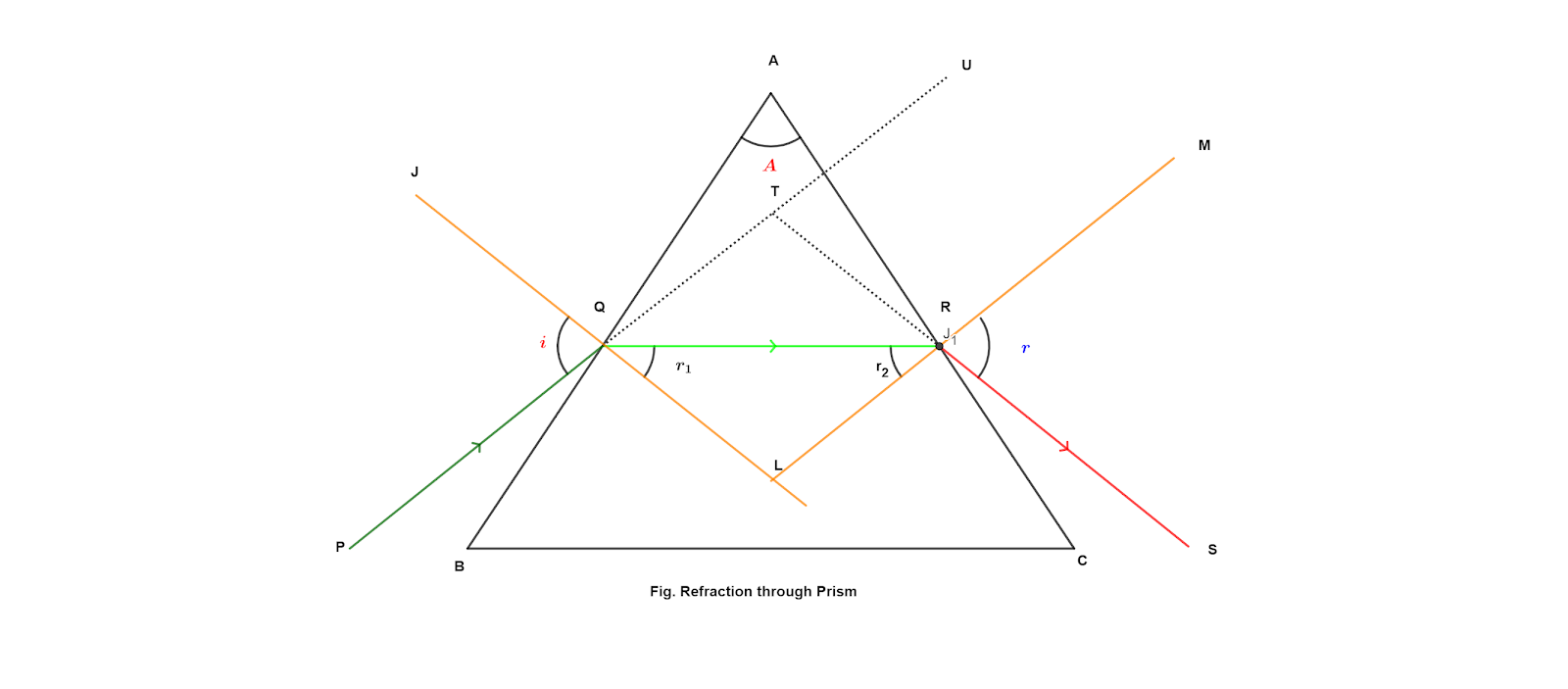Refraction through prism

A prism is a transparent refracting medium bounded by two plane surfaces meeting each other along a straight edge. In the figure below, AB and AC are the refracting surfaces and ∠BAC is the angle of prism. Consider a prism placed in air and a ray PQ be inicident on a refracting surface AB. The ray is then refracted along QR. The angle of incidence and angle or refraction are 'i' and 'r 1 ' here respectively. The ray QR is then incident upon AC. Here, the light goes from optically denser medium to an optically rarer medium. If the angle of incidence in the denser medium 'r 2 ' is not greater than the critical angle, the ray is refracted (emerge out) in air along RS. The angle 'e' is the angle of emergence. If the prism were not present, the incident ray would have passed undeviated along PQTU. Because of the prism, the final ray goes along RS. The angle UTS=δ is called the angle of deviation. When the angle of inc...
